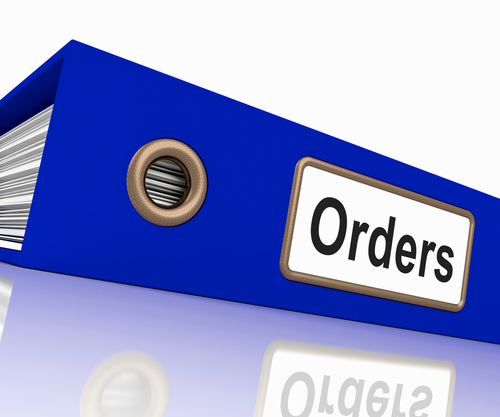‘Implementing a purchase order system can be useful for both parties,’ say Clive Lewis of the Institute of Chartered Accountants & Wales, ‘as it helps the customer minimise the risk of incorrect payments by ensuring that deliveries and invoices have a corresponding purchase order number, while suppliers have proof that goods and services were ordered.’
A purchase order (PO) is a legally binding document and represents the buyer’s intent to purchase specific quantities of product at specified prices.
A purchase order will usually comprise the following:
- Purchase Order number (more usually referred to as a ‘PO number’)
- Shipping date
- Billing address
- Shipping address
- Requested terms
- A list of products with quantities and price
Though it may be another piece of dreaded paperwork, a purchase order is instrumental in tracking expenditures. It also contributes to your accounts payable process by letting you know how much will have to be paid out during a certain period of time.
You could have your employees fill out the purchase order electronically and email it to whoever handles your accounting, or they could print out the form and pass along a paper version.
There are three main types of purchase order:
Electronic
Many companies now use electronic purchase orders following specific standards, such as the United Nations rules on Electronic Data Interchange For Administration, Commerce, and Transport (EDIFACT) or those of RosettaNet, a non-profit consortium aimed at establishing standard processes for the sharing of business information.
Single-use
Single-use purchase orders are usually used by retail stores. The purpose of a single-use purchase order is to keep track of a single order from a vendor until all items have been received from that order.
Once all items have been received, that purchase order number can no longer be used.
Blanket
Another class of purchase orders are the blanket purchase orders.
These are typically used by organisations to keep track of money that was spent for a particular department or for a specific project (such as IT equipment upgrade).
Another general use of the blanket purchase order is to limit spending during a specific timeframe or for a specific project.
Collecting payments
Alongside a purchase order system, it is important that a company has strong credit management practices to safeguard cash flow from late payment and bad debt.
Lewis explains: ‘This begins with getting the basics right by credit vetting new customers to check they will be able to pay their debts on time.
If you are not completely happy that the company will pay to credit terms, ask for full or partial payment up front – a credit limit is a reward for good payment, not an automatic right.
‘Once you are satisfied that the company is creditworthy, then ensure that the account is set up accurately including the company’s full name, business address and home address for the company director.’
When these basic steps are in place, a strong collections process is vital to obtain payment when the goods or services have been delivered.
‘Invoice promptly and accurately and follow up with reminders,’ says Lewis.
‘Be consistent and ensure that the person dealing with the collection process is empowered to speak on behalf of the business, with the knowledge, skills and authority to deal with any account queries.’
When a customer won’t pay, simply ignores requests for payment or makes endless promises to pay that are not kept, some final action becomes necessary and should be taken without delay.
This includes appointing a collection agency, pursuing the debt through the County Court, or passing the debt to a solicitor.
In the event of non-payment, the seller can use a purchase order as a legal document in a court of law to demonstrate the buyer’s intent and to facilitate collection efforts.
Handling overseas purchase orders
When writing a purchase order for a vendor overseas, keep in mind the vendor will likely give you the price in their domestic currency. That’s why when issuing the order, you should check what the currency exchange rate is so you can understand the true cost. If you pay with a bank or service like PayPal, they could charge an inflated exchange rate on top of transaction fees, which could increase the cost.
Fortunately here are ways to reduce the cost of paying an invoice in another currency. Alternative providers do exist. Take TransferWise, a fintech that specialises in international money transfers and could be up to to eight times cheaper than the bank. They’ll always convert money at the mid-market exchange rate, and only charge one, small upfront fee on the value of the transfer.





